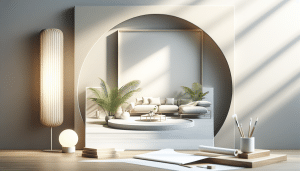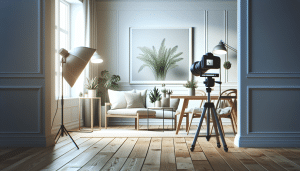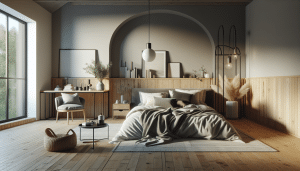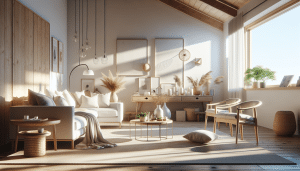The Best Interior Design Ideas for Modern Homes
Samantha Lee August 11, 2025
Interior design trends for modern homes in 2025 are a reflection of our evolving needs, desires, and lifestyles. As we move deeper into a world dominated by technology, sustainability concerns, and a desire for comfort, home design is shifting to reflect these changes. Modern homes are no longer just about aesthetics—they need to be functional, sustainable, and adaptable to the ever-changing demands of our daily lives.
In this article, we’ll explore the best interior design ideas for modern homes in 2025. From minimalist layouts to eco-friendly designs, we’ll cover the latest trends that will define how we live in our homes.
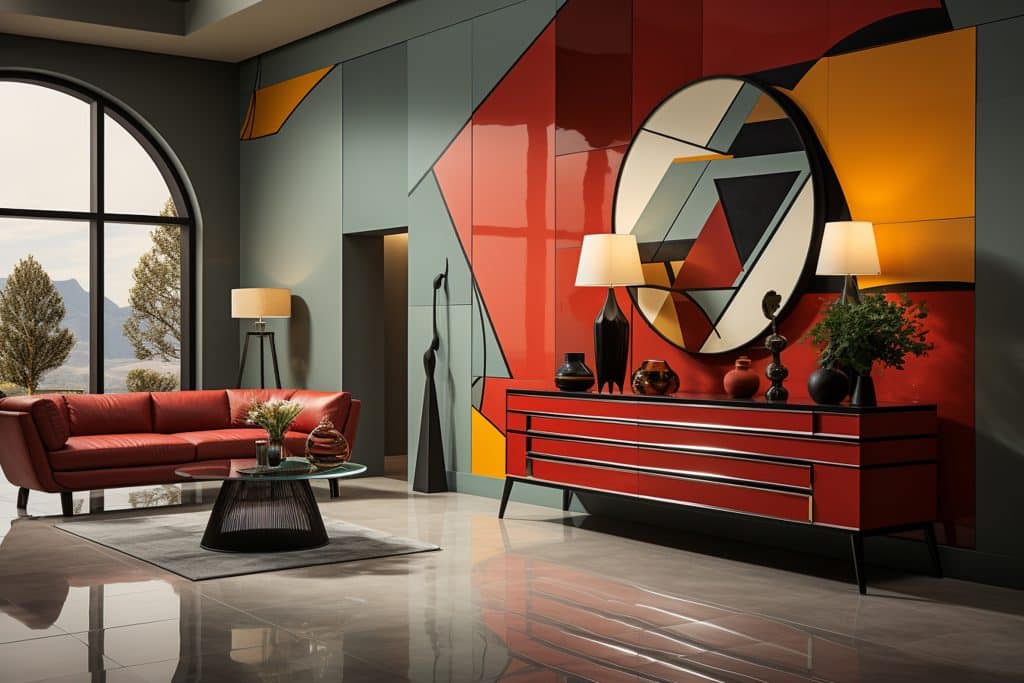
1. Sustainable Design: Eco-Friendly Homes for a Better Tomorrow
Sustainability is at the forefront of interior design in 2025. As climate change and environmental issues become increasingly urgent, many homeowners are looking to reduce their carbon footprint and make their homes more eco-friendly. This trend is not just about using green materials but also about creating designs that promote energy efficiency and reduce waste.
Eco-Friendly Materials
In 2025, the use of sustainable materials in home design is more widespread than ever. Homeowners are choosing recycled, repurposed, and eco-conscious materials for furniture, flooring, and finishes. Think bamboo flooring, recycled glass countertops, and reclaimed wood furniture.
- Bamboo and Cork Flooring: These materials are renewable and durable, making them perfect for eco-conscious homeowners.
- Recycled and Upcycled Furniture: Using old furniture and giving it a new life is becoming increasingly popular. Upcycling furniture not only reduces waste but also adds unique, personal touches to a home.
- Natural Paints: Eco-friendly paints made from natural ingredients like clay, lime, and mineral pigments are replacing conventional paints that contain harmful chemicals.
Energy-Efficient Design
Homeowners are integrating smart home technology to make their homes more energy-efficient. In 2025, this includes:
- Smart Thermostats: These devices adjust temperature settings automatically based on occupancy and time of day, reducing energy consumption.
- Solar Panels and Green Roofs: Solar panels are becoming more affordable, and green roofs provide insulation, reduce energy costs, and contribute to urban biodiversity.
- Efficient Appliances: Energy-efficient appliances, such as those with Energy Star ratings, are being prioritized to reduce energy consumption in the home.
2. Minimalist and Functional Spaces: Less is More
In recent years, minimalist design has gained popularity, and in 2025, this trend continues to dominate modern homes. With more people seeking simplicity and efficiency, minimalist design emphasizes function over form, reducing clutter and focusing on clean lines, neutral colors, and an uncluttered aesthetic.
Open-Concept Layouts
Open-concept spaces are ideal for creating a minimalist environment. By removing walls between rooms, open layouts encourage a more fluid flow and make small spaces feel larger. In 2025, more homes are designed to have seamless transitions between the living room, dining room, and kitchen, promoting social interaction and accessibility.
Hidden Storage Solutions
As more people adopt minimalist lifestyles, finding clever storage solutions has become a priority. Homeowners are increasingly opting for hidden storage spaces that keep the home tidy without sacrificing functionality. Built-in cabinets, under-bed storage, and multifunctional furniture (like storage ottomans or sofas) are ideal for keeping clutter at bay.
Simple, Yet Stylish Furniture
Furniture in minimalist homes is sleek and functional. Modern homes in 2025 feature simple, elegant designs with clean lines and neutral colors. Think of modular furniture that adapts to your needs and simple, low-profile sofas that complement open spaces.
3. Smart Homes and Technology Integration
Technology continues to shape the way we live, and in 2025, smart home devices are more integrated than ever. From lighting systems to security features, technology has become a crucial part of modern home design.
Voice-Controlled Home Automation
Voice-controlled assistants like Amazon Alexa, Google Assistant, and Apple HomeKit are becoming ubiquitous in modern homes. These devices allow homeowners to control everything from lights and temperature to entertainment and security systems—all with a simple voice command.
- Smart Lighting: Lighting systems that adjust based on time of day or occupancy are becoming common. You can set the perfect mood with just one touch or command.
- Smart Security: From doorbell cameras to motion sensors, smart security systems help homeowners keep their property safe and secure. These systems can be controlled remotely via smartphone apps.
Health-Conscious Technology
In 2025, the focus on health extends beyond fitness to include the design of homes. Smart technologies that monitor air quality, temperature, and even light exposure are becoming key features of modern homes.
- Air Purifiers and Humidifiers: These devices ensure that the indoor air is free from pollutants and allergens, promoting better health and comfort.
- Circadian Lighting: Lighting systems that mimic the natural patterns of the sun are becoming popular, helping to regulate sleep patterns and boost productivity.
4. Biophilic Design: Bringing the Outdoors In
Biophilic design is a growing trend that connects homeowners with nature. By incorporating natural elements into the home, biophilic design enhances well-being and promotes a peaceful atmosphere. This trend is particularly relevant in urban areas where access to green spaces may be limited.
Indoor Gardens and Green Walls
Adding plants to the interior of a home not only improves air quality but also creates a calming and aesthetically pleasing environment. In 2025, indoor gardens and green walls are becoming more common, even in small spaces. Vertical gardens, which allow plants to grow up rather than out, are especially popular in apartments and small homes.
Natural Materials
Wood, stone, and other natural materials are being incorporated into modern homes. Wooden beams, stone countertops, and natural stone floors help create a warm, organic feel that connects the indoors with the natural world outside.
Large Windows and Natural Light
Large windows, open spaces, and natural light are all elements of biophilic design. By incorporating these features, homeowners can make their living spaces feel more connected to nature, even in urban environments.
5. Bold Color Schemes and Statement Pieces
While neutral tones remain a staple of modern design, 2025 is seeing an increased interest in bold, vibrant colors that make a statement. Homeowners are moving beyond the typical grey and white walls to embrace rich, saturated hues that bring life and personality to their spaces.
Rich, Jewel-Toned Accents
Colors like emerald green, sapphire blue, and ruby red are becoming popular in home décor. These jewel tones are being used for accent walls, throw pillows, rugs, and even furniture. They add sophistication and warmth to modern spaces without overwhelming the design.
Statement Furniture Pieces
Statement furniture pieces, such as brightly colored sofas, unique light fixtures, and bold art pieces, are helping to create visually interesting and dynamic rooms. Rather than opting for entire rooms of matching furniture, homeowners in 2025 are embracing eclectic mixes that tell a personal story.
Conclusion
Interior design in 2025 is about more than just aesthetics; it’s about creating spaces that are functional, sustainable, and adaptable to our changing world. Whether through eco-friendly materials, smart technology, or biophilic design, modern homes are becoming more connected to both the environment and the people who live in them.
By embracing these emerging trends, homeowners can create a space that not only reflects their personal style but also supports their lifestyle needs. From minimalist layouts to bold colors, the possibilities for creating a modern, functional home are endless.
As we move further into 2025, the future of interior design is about creating spaces that are as adaptable and forward-thinking as the people who inhabit them.
Reference
- Interior Design Trends 2025: https://www.decorilla.com
- Savvy Sustainable Design Trends for 2025: https://reclaimdesign.org
- Home Design Trends That Will Define 2025: https://www.houzz.com




